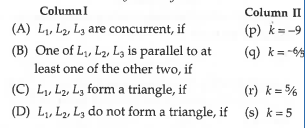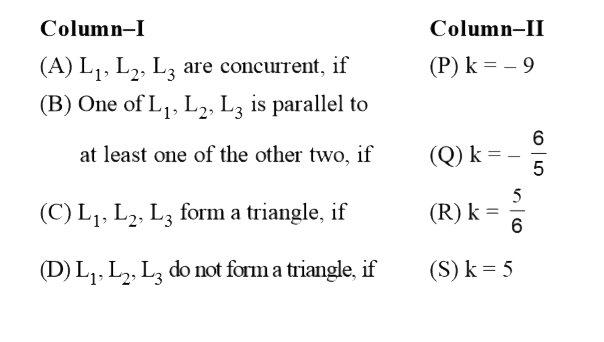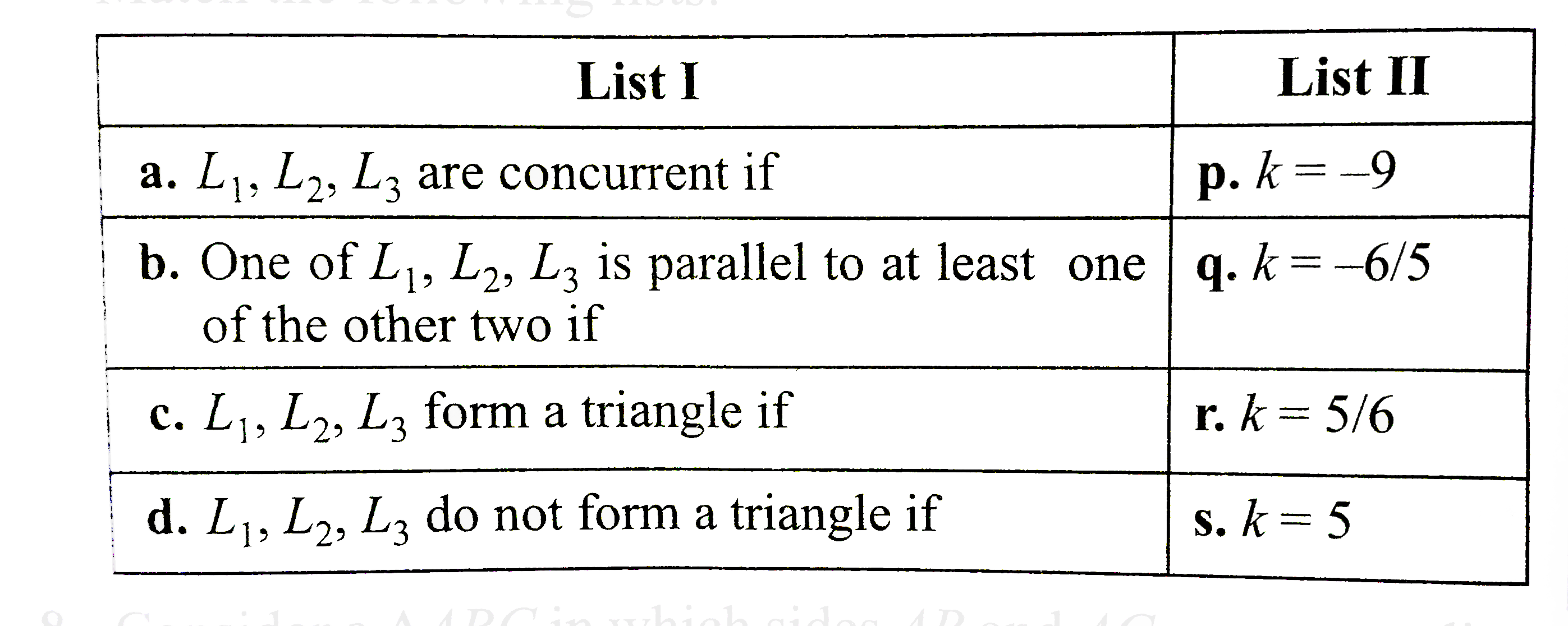Consider the lines give by
L1:x+3y−5=0,L2:3x−ky−1=0,L3:5x+2y−12=0

Step by step video & image solution for Consider the lines give by L_1: x+3y -5=0, L_2:3x - ky-1=0, L_3: 5x +2y -12=0 by Maths experts to help you in doubts & scoring excellent marks in Class 12 exams.
Updated on:21/07/2023Topper's Solved these Questions
- Some New Pattern ProblemsBook:A DAS GUPTAChapter:Some New Pattern ProblemsExercise:Exercise
Explore 137 Videos
- Screening TestsBook:A DAS GUPTAChapter:Screening TestsExercise:Exercise
Explore 38 Videos
- Total Conditional Probability and Bayes' TheoremBook:A DAS GUPTAChapter:Total Conditional Probability and Bayes' TheoremExercise:Exercise
Explore 29 Videos
Similar Questions
Consider the lines given by : L1:x+3y−5=0,L2:3x−ky−1=0,L3:5x+2y−12=0 If a be the value of k for which lines L1,L2,L3 do not form a triangle and c be the value of k for which one of L1,L2,L3 is parallel to at least one of the other lines, then abc=
View SolutionConsider the lines give by L1:x+3y−5=0,L2:3x−ky−1=0,L3:5x+2y−12=0

View Solution
Knowledge Check
Consider the following lines :
L1:x−y−1=0
L2:x+y−5=0
L3:y−4=0
Let L1 is axis to a parabola, L2 is tangent at the vertex to this parabola and L3 is another tangent to this parabola at some point P.
Let 'C' be the circle circumscribing the triangle formed by tangent and normal at point P and axis of parabola. The tangent and normals at normals at the extremities of latus rectum of this parabola forms a quadrilateral ABCD.
Q. The area of the quarilateral ABCD is :A16B8C64D32Consider the planes p1:2x+y+z+4=0,p2:y−z+4=0andp3:3x+2y+z+8=0
Let L1,L2,L3 be the lines of intersection of the planes p2andp3,p3andp1,p1andp2 respectively. Then.Aat least two of the line L1,L2andL3 are non parallel.Bat least two of the lines L1,L2andL3 are parallelCthe three planes intersect in the line.Dthe three planes form a triangular prism.
Consider the lines given by
L1:x+3y−5=0, L2:3x−ky−1=0 L3:5x+2y−12=0
Column-IColumn-II(A),L1,L2,L3 are concurrent, if(p)k=−9(B) One of L1,L2,L3 is parallel to at least one of the other two, if(q)k=−65(C)L1,L2,L3 from a triangle, if(r)k=56(D)L1,L2,L3 do not from a triangle, if(s)k=5
View SolutionConsider the lines given by
L1=x+3y–5=0
L2=3x–ky–1=0
L3=5x+2y–12=0
Match the statements/Expression in Column-I with the statements/Expressions in Column-II and indicate your answer by darkening the appropriate bubbles in the 4 × 4 matrix given in OMR.

View SolutionConsider the lines given by
L1:x+3y−5=0
L2:3x−ky−1=0
L3:5x+2y−12=0
Match the following lists.

View SolutionConsider the lines given by
L1=x+3y–5=0
L2=3x–ky–1=0
L3=5x+2y–12=0
Match the statements/Expression in Column-I with the statements/Expressions in Column-II and indicate your answer by darkening the appropriate bubbles in the 4 × 4 matrix given in OMR.

View SolutionL1=x+3y−5=0,L2=3x−ky−1=0,L3=5x+2y−12=0 are concurrent if k=
View SolutionConsider three lines as follows. L1:5x−y+4=0 L2:3x−y+5=0 L3:x+y+8=0 If these lines enclose a triangle ABC and the sum of the squares of the tangent to the interior angles can be expressed in the form pq, where pandq are relatively prime numbers, then the value of p+q is (a)500 (b)450 (c)230 (d) 465
View Solution

